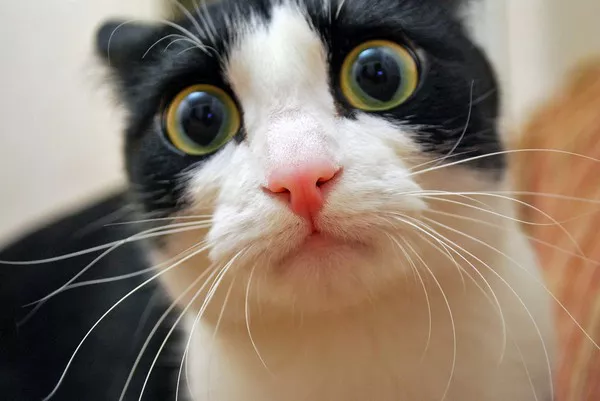Cats have lived with humans for thousands of years, yet they remain mysterious creatures. Many cat owners wonder: does my cat really know me? The answer is yes – cats do recognize their owners, but not in the same way humans or even dogs do. Cats se a combination of senses and memory to identify the people in their lives. Their recognition system is complex and fascinating. Unlike dogs who often show obvious excitement when owners return, cats display more subtle signs of recognition. Understanding how cats recognize us helps strengthen the human-feline bond. It also explains many cat behaviors that owners often misunderstand. Let’s explore the different ways cats identify their favorite humans.
The Primary Senses Cats Use for Recognition
Sense of Smell: A Cat’s Powerful Identification Tool
A cat’s nose contains 200 million scent receptors – far more than humans have. This incredible sense of smell plays the biggest role in how cats recognize people.
Each person has a unique scent signature made up of:
- Natural body odors
- Soaps and perfumes you use
- The smell of your home and clothes
- Even what you eat that comes through your skin
Cats create a “scent profile” of their owners. They memorize this combination of smells. When you come home, your cat sniffs you to confirm your identity. This is why cats often rub against your legs – they’re refreshing their memory of your scent while marking you with theirs.
Voice Recognition: Your Cat Knows Your Sound
Studies show cats can distinguish their owner’s voice from strangers. Researchers found that cats respond differently (ear movements, head turns) when hearing their owner’s voice compared to others. However, cats often choose not to respond. This doesn’t mean they don’t recognize you – it simply reflects their independent nature. Your cat probably knows it’s you calling, but may decide answering isn’t worth the effort!
Visual Recognition: Faces and Body Shapes
Cats don’t rely on vision as much as humans do, but they can recognize faces. Research indicates cats can tell human faces apart, especially their owners’. They also notice:
- Your body shape and size
- How you move
- Your posture and walking style
Cats see better in dim light than bright light. They notice movement more than stationary details. So your cat likely recognizes your silhouette and movements before seeing your face clearly.
Routine and Association: Memory of Daily Patterns
Cats have excellent memories for routines and associations. They recognize owners through:
- Daily schedules (when you usually feed them)
- Specific sounds (your car pulling in the driveway)
- Regular activities (where you sit in the evening)
This explains why cats often wait by the door around the time you normally come home. They’ve memorized the pattern, not just recognized you physically.
How Cats Show They Recognize You
Now that we know how cats recognize owners, how can you tell they know you? Look for these behaviors:
The Slow Blink: A Cat’s “I Love You”
When a cat looks at you and slowly closes its eyes, it’s showing trust and recognition. This “cat kiss” means they’re comfortable enough with you to let their guard down. Try slow blinking back to strengthen your bond.
Tail Greetings
A tail straight up with a slight curve at the end is how cats greet recognized friends. If your cat does this when you come home, it’s saying “I know you!”
Head Bunting and Rubbing
When cats rub their heads or bodies against you, they’re mixing their scent with yours. This shows they recognize you as part of their social group.
Following You Around
A cat that follows you from room to room clearly knows and likes you.They wouldn’t bother with someone they didn’t recognize as important.
Strengthening Your Cat’s Recognition of You
Want to ensure your cat knows and loves you?Try these tips:
Consistent scent: Avoid changing perfumes or soaps too often so your cat can learn your smell.
Positive interactions: Regular play, feeding, and gentle petting create good associations.
Respect their space: Let your cat approach you rather than forcing attention.
Establish routines: Cats thrive on predictable schedules for feeding and playtime.
Learn cat language: Slow blinking and soft voices help cats feel comfortable with you.
Conclusion: Your Cat Knows You
While cats may not greet you with wagging tails like dogs, they absolutely recognize their owners. Through scent, sound, sight, and memory, your cat knows who you are and has formed a bond with you.
Related Topic:



























